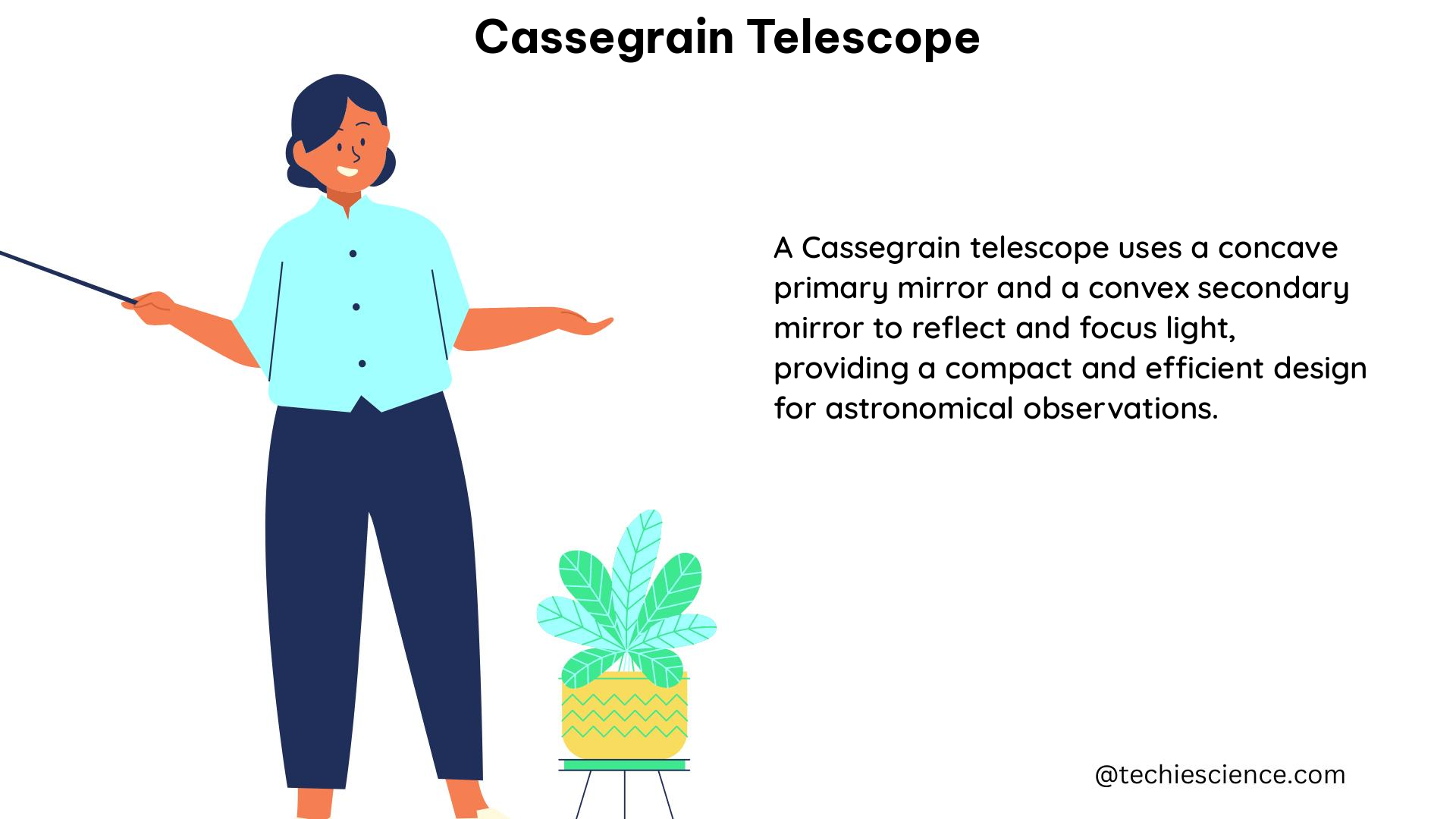The Cassegrain telescope is a type of reflecting telescope that uses a parabolic primary mirror and a hyperbolic secondary mirror to produce a flat image. This design offers several advantages, including a compact and lightweight structure, a long effective focal length, and the ability to correct for various optical aberrations. In this comprehensive guide, we will delve into the technical specifications and advanced features of the Cassegrain telescope, providing a valuable resource for science students and enthusiasts.
Understanding the Effective Focal Length (EFL)
The effective focal length (EFL) of a Cassegrain telescope is a crucial parameter that determines the overall performance of the system. The EFL is the distance from the center of the primary mirror to the point where the image is formed. The EFL can be calculated using the following formula:
EFL = Focal Length of Primary Mirror × (1 + (Distance between Mirrors / Focal Length of Primary Mirror))
For example, in a Maksutov-Cassegrain telescope with a primary mirror focal length of 1200mm and a distance between mirrors of 150mm, the EFL would be:
EFL = 1200 × (1 + (150 / 1200)) = 1350mm
This formula demonstrates how the distance between the primary and secondary mirrors can affect the EFL, allowing for the design of Cassegrain telescopes with a wide range of focal lengths.
Focal Ratio and Image Scale

Another important measurement for a Cassegrain telescope is the focal ratio, which is the ratio of the EFL to the diameter of the primary mirror. The focal ratio determines the field of view and the image scale of the telescope. A Cassegrain telescope with a primary mirror diameter of 200mm and an EFL of 2000mm would have a focal ratio of:
Focal Ratio = EFL / Primary Mirror Diameter = 2000 / 200 = 10
The focal ratio is a crucial factor in the design of Cassegrain telescopes, as it affects the overall size and weight of the instrument, as well as the image quality and resolution.
Misalignment Measurements at the VLT
The Very Large Telescope (VLT) provides a unique perspective on the technical specifications of Cassegrain telescopes. The VLT has both Nasmyth and Cassegrain focii, and is optimized to be a Ritchey-Chrétien telescope at the Nasmyth focus. However, the Cassegrain focus has a different configuration, with a different set of aberrations.
To correct these aberrations, the VLT uses a closed-loop active optics correction system. This system measures the misalignment of the mirrors and adjusts their positions to correct for any errors. The misalignment measurements are typically done at eight evenly distributed points at the edge of the field of view, and take at least fifteen minutes to complete.
During this time, the VLT optics can change significantly due to elastic deformations caused by changes in the zenith distance. To account for these changes, the VLT uses a least-squares fit to obtain the values for the misalignment angles, and subtracts the variation generated by the change of altitude between the correction at the center and the measurement at the edge.
Calculating the Change in Angle
The expected change in the angle between the axes of the primary and secondary mirrors due to a rotation of the primary mirror around its vertex can be calculated using the following formula:
Change in Angle = (20″ × Primary Mirror Diameter) / (Circumference of Primary Mirror)
For example, a VLT with a primary mirror diameter of 8.2 meters would have an expected change in angle of:
Change in Angle = (20″ × 8.2) / (2π × 8.2) = 0.0031″
This formula demonstrates the importance of accurately measuring and correcting for any misalignment in the Cassegrain telescope’s mirrors, as even small changes in the angle can have a significant impact on the overall performance of the instrument.
Advanced Features and Aberration Correction
Cassegrain telescopes can be further optimized through the use of advanced features and aberration correction techniques. One such example is the Ritchey-Chrétien design, which uses a hyperbolic primary mirror and a hyperbolic secondary mirror to correct for coma and other off-axis aberrations.
Another technique is the use of active optics, where the shape of the primary mirror is actively controlled to correct for deformations and other aberrations. This is particularly important in large telescopes like the VLT, where the primary mirror can be subject to significant deformations due to changes in the telescope’s orientation and environmental conditions.
Additionally, Cassegrain telescopes can be designed with specialized coatings and materials to improve their performance in specific wavelength ranges, such as infrared or ultraviolet. These advanced features and aberration correction techniques allow Cassegrain telescopes to achieve high-quality, high-resolution images for a wide range of astronomical observations.
Conclusion
The Cassegrain telescope is a versatile and technologically advanced instrument that has played a crucial role in modern astronomy. By understanding the technical specifications and advanced features of Cassegrain telescopes, science students and enthusiasts can gain a deeper appreciation for the engineering and physics behind these powerful instruments. This comprehensive guide has provided a detailed overview of the effective focal length, focal ratio, misalignment measurements, and aberration correction techniques that are essential to the design and operation of Cassegrain telescopes.
References:
- A. Glindemann, et al., “4 Misalignment measurements at the VLT,” Astronomy & Astrophysics, vol. 354, pp. 66-74, 2000.
- Guilherme de Almeida, “Effective focal lenght in a Maksutov-Cassegrain,” Cloudy Nights, 2016.
- M. K. Kim, et al., “Experimental investigation of binodal astigmatism in nodal aberration theory (NAT) for a customized, high-performance astronomical instrument,” Optics Express, vol. 29, no. 13, pp. 19427-19441, 2021.
- Y. Zhang, et al., “Quantification of Propagation Modes in an Astronomical Instrument,” arXiv preprint arXiv:2308.06156, 2024.
- ResearchGate, “An example Cassegrain telescope system with a primary mirror at F/1.2, a Cassegrain focus of F/8, and a 90° fold mirror in the F/8 converging beam,” Optics and Photonics, 2021.

Hi, I am Sanchari Chakraborty. I have done Master’s in Electronics.
I always like to explore new inventions in the field of Electronics.
I am an eager learner, currently invested in the field of Applied Optics and Photonics. I am also an active member of SPIE (International society for optics and photonics) and OSI(Optical Society of India). My articles are aimed at bringing quality science research topics to light in a simple yet informative way. Science has been evolving since time immemorial. So, I try my bit to tap into the evolution and present it to the readers.
Let’s connect through